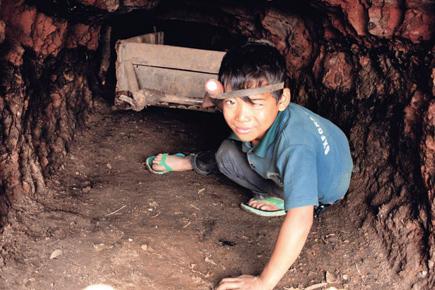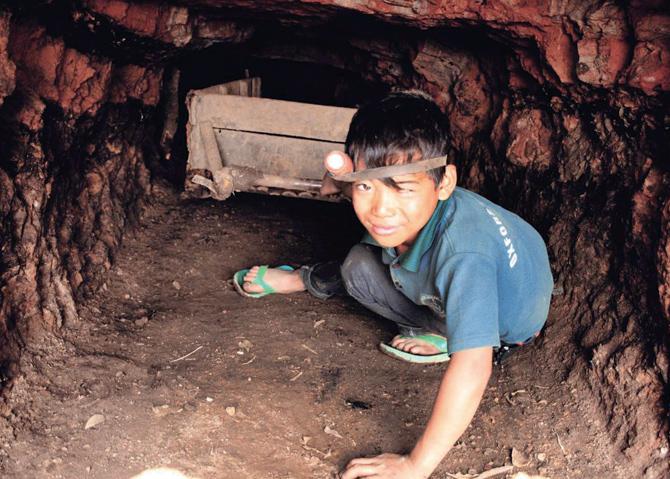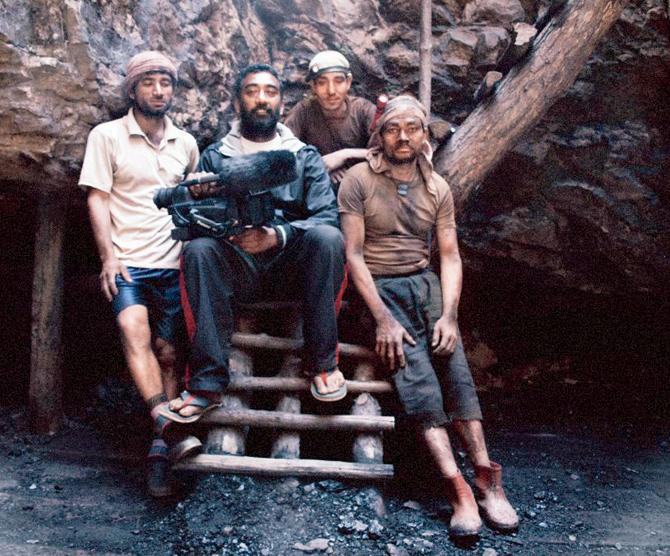Chandrasekhar Reddy's award-winning docu, ready for a mainstream release, looks at Meghalaya’s rat-hole mines but without portraying under-age miners as victims

Suraj Subba, the protagonist of Fireflies in the Abyss
Chandrasekhar Reddy believes in the power of filmmaking. But, he is aware that cinema
cannot always become a pallbearer of change.
ADVERTISEMENT

Suraj Subba, the protagonist of Fireflies in the Abyss
Suraj Subba, now 16, was an 111-year-old working in the coal mines of East Jaintia Hills in Meghalaya. This is where he has begun his day, every day, for as long as he can remember. He mustered the courage to flee by running away with a group of friends who promised to fund his education, but he returned to live the only life he knows. “I told him,” says Reddy, who chose to make him one of the protagonists of his documentary, Fireflies in the Abyss, “I would help him. He even got an offer from someone well-off in Mumbai, who after watching the documentary, offered to fund his education.

The director (centre) with the coal miners of East Jaintia Hills
But Suraj said to me, ‘how long can I be dependent on someone?’ I found that a valid question,” says the 40-year-old in a telephonic interview from Bengaluru. Subba indulges in the primitive method of rat-hole coal mining which is characteristic of the East Jaintia Hills. It involves digging pits as narrow as three feet hight into the ground to get to the coal seam. Tunnels made sideways help access the seams. Often, tunnel roofs collapse, trapping workers within. Though the National Green Tribunal, which expediates cases pertaining to the environment, had banned rat-hole coal mining across Meghalaya in 2014, the practice continues.
Fireflies premiered at the Busan International Film Festival, south Korea, in 2015, and won the award for Best Long Documentary at the International Documentary and Short Film Festival of Kerala last week. It has also been awarded the Golden Conch award for Best Documentary Feature film at the Mumbai International Film Festival, 2016.
Indie film production outfit, Drishyam Films has embraced it as distributor, and announced a pan-India mainstream release on July 1.
Reddy, who is based in Mumbai, follows Suraj through the film, and his extraordinary circumstances, no different from those of his fellow miners. “It’s quite a wild, wild West situation there. A village called Lad Rymbai forms the epicentre of the region, and every farmer here has a cola mine in his backyard,” says Reddy, who learnt of the rat-hole mining menace in 2010 during a visit to Meghalaya when he was researching a different project.
Children like Suraj, Reddy learnt, are preferred because they can crawl easily through pinched passages that are often no more than three feet high. They are paid for every cart load of coal they manage to eek out. A miner like Suraj usually manages to make R8,000 a week. “That’s better money than any other manual labour offers. It’s why the job attracts so many people. There is bloodshed, prostitution, drugs... you name it. It’s a cash economy that’s completely mad,” Reddy explains.
Nineteen-year-old Nishant Rai, another protagonist, had bigger plans unlike Suraj. He wanted to be a photographer and return to Nepal where he would open a studio. “He was entrepreneurial. He bought a digital camera, and on off days, he’d visit neighbouring mining camps. He would take pictures of the locals, head off to the nearest town, print them, and return to sell them for a fee. He is now in Nepal. The studio will have to wait though, due to lack of funds,” says Reddy.
Reddy’s purpose when making this documentary was dual. While raising awareness about dangerous mining practices was one, he was clear that he didn’t wish to project the characters as victims. “I think Suraj is happy there.
How else would you explain his decision [to return]? The documentary takes a neutral stand. It’s about how people battle poverty and why they do what they do. This is their life and they are making the best of it. Period.”
 Subscribe today by clicking the link and stay updated with the latest news!" Click here!
Subscribe today by clicking the link and stay updated with the latest news!" Click here!








